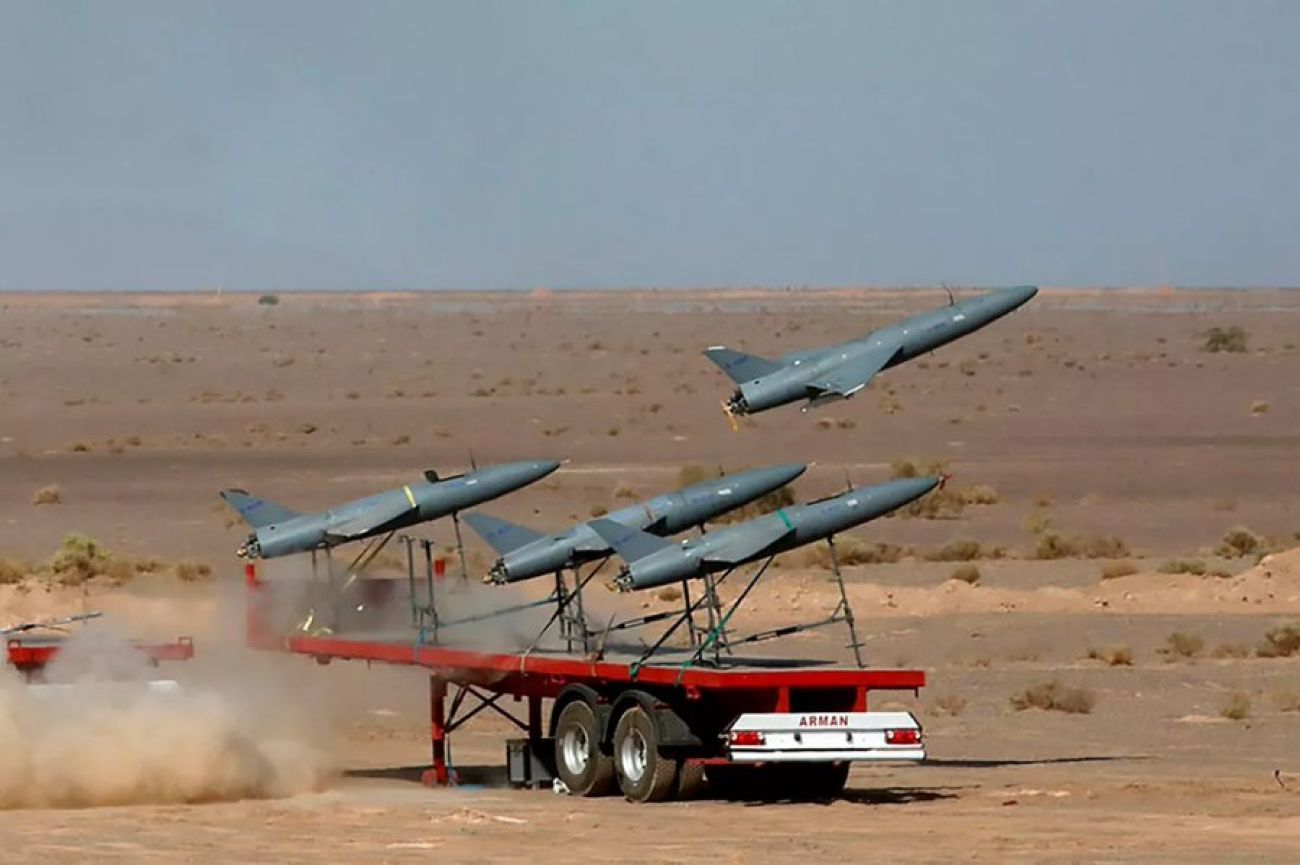Ukraine has alleged Russia has now purchased an even more advanced Iranian drone, the Arash-2, with some Ukrainian military watchers claiming Iranian experts are advising Russia on the ground.
‘Catastrophic Failure’: What Caused Russia’s Brand New Su-30 Fighter Jet Lose Control & Nose-Dive Into Building?
One-Of-A-Kind Headcam Video Captures Russian Pilot Ejecting From An Su-25 Jet After Being Hit By Ukrainian Fire
Russia has already been using the Shahed-136 drone significantly in harassing Ukrainian military and military-connected civilian infrastructure, despite losing many to anti-aircraft fire.
Iran, meanwhile, continues to deny any involvement in any arms sales officially. Still, unnamed officials have been quoted by Reuters confirming the transfer of Fateh-110 and Zolfagar surface-to-surface ballistic missiles.
Meanwhile, Iran has clarified it will not sell Arash-2 to Russia, fearing the fall of its technology into US hands.

Advanced Than Even Shahed-136?
Commentators on Russian social media described the ‘Arash-2’ as a “literal” cruise missile, but with a lower flight speed, allowing the drone to patrol over the target.
There is not much information about the Arash-2, but it is known to be able to hit targets at a distance of up to 2000 kilometers and has a significantly larger warhead than the Shahed-136.
It was unveiled only in September this year, with observers saying it is meant to hit Israeli targets in Tel Aviv and Haifa.
“Iran may supply its early version, Arash-1, to the RF Armed Forces, if the order itself took place at all,” a Russian national frequently commenting on Russian military issues told EurAsian Times on Telegram.
“Moreover, Israel’s air defense system like the Iron Dome is unlikely to be able to intercept it easily since it mostly has been working against unguided, crude Hamas rockets. This guided projectile can maneuver, change directions and fly low.
I am certain Russia has agreed to help Iran to improve its missile and drone technology in return for Iran filling the Russian gap in cheap, mass-produced, expendable drones and mid-range ballistic missiles,” the Russian defense observer said.
However, squadron Leader Vijainder K Thakur doubted the Arash-2’s maneuvering capabilities. “There is no evidence that Arash-2 can maneuver, change direction and fly low. If it is jet powered, it likely cruises at medium altitude for the best range. It possibly dipped down to lower levels during the home run to avoid early radar detection.
The ability to maneuver and change direction would imply a sophisticated navigation system which would increase costs. In such as case, it would be as expensive as a Russian Kalibr. Higher speed of the missile with a jet engine would make it less vulnerable to AD fire,” he explains.

US & Ukraine Jittery
The US Department of State spokesperson Ned Price on October 19 said the US had joined the United Kingdom and France in raising the Iranian UAV sales to Ukraine in the UN Security Council.
Price added that the Russian acquisition of these weapons violated UNSC Resolution 2231. But the statement can also be a testament to the effectiveness of Iranian UAVs, particularly the Geran-2 loitering munition.
General Kenneth MacKenzie, the former head of the US Central Command (CENTCOM), recognized their effectiveness in an interview with a US news channel.
“If you launch enough of them, the theory is that you will be able to overcome air defenses because they fly at low altitudes and they are very cheap to produce,” adding that Iran produces “thousands” of them.
To put matters in perspective, the Russian Kalibr cruise missile costs about $1 million, and the Tomahawk cruise missile costs about $2 million. Depending on options, drones like the Shaheed-136 and Arash-2 cost between $10,000 to $50,000.
The Institute for the Study of War (ISW) also said: “Russia will likely continue to leverage its relationship with Iran to circumvent sanctions, although it is doubtful that Russian forces will use the Arash-2 to any greater effect than they have used the Shahed-136 model.”
While larger systems like the S-300, Buk, and Osa are practically useless against these drones, Russian platforms like Strela-10, Tunguska, and Tors, were at the disposal of the Armed Forces of Ukraine and could be effective against UAVs.
Many of them have, however, been reported to be destroyed by Russia. MANPADS, meanwhile, are ineffective, whose homing heads cannot capture drones since they do not emanate any infrared or radar frequency.
It has been assumed that Ukrainian anti-aircraft gunners fire MANPAD “volleys” of several missiles, which sometimes manage to bring down the Geran, but might come at the cost of expanding the rockets.
Russia Makes A Statement With Iranian Drones
Iranian drone and missile supplies to Russia also bolster the Russian argument that it is liable to receive arms from its ally if NATO and the US can arm Ukraine. Thus, the West cannot complain about Iran becoming a party to the conflict since, according to Moscow, the West has long been a direct party after arming Ukraine before and after the war.
Moreover, Russia began receiving Iranian weapons only seven months into the war, and that too, only a few hundred thousand dollars worth of cheap drones. The US, on the contrary, has been arming Ukraine since 2014 with nearly $10 billion worth of highly sophisticated weapons.
This is not to mention the unofficial presence of NATO and US advisors, private mercenaries on the ground, and targeting information by the US that Ukraine used to strike the Russian military.
- The author can be reached at satamp@gmail.com
- Follow EurAsian Times on Google News




